
Konstantin’s vision was always to have his legacy carried out by his family. He dreamed of his children, grandchildren, and now great-grandchildren, taking care of the land. The story is in our family blood, in the very vines that were planted in 1958, the soil, and the grapes. Each season, each vintage adds a new layer to our story.
The Story is Still Being Told (1:52 mins)

Konstantin and Eugenia celebrated the birth of their first child Willibald Konstantin Frank in 1925, the same year Konstantin reapplied to the Odessa Agricultural College. Their first child would live a privileged life living in the state-owned residence with a few servants along with his new sisters, Hilda and Lena, during Konstantin’s focus on re-establishing the Troubetskoy vineyards. more practical privileges, including better clothing and shoes, which they wore even in the summer when their Ukrainian cohorts wore none.
World War II in the 1940s forced the Frank family to migrate to Austria. They were only allowed to bring one suitcase each and enough food and water for three days. The Frank family huddled together under blankets and rugs as they escaped on a coal car attached to a train carrying wounded Germans away from the Russian front.
Shortly after moving to Austria, Willy was conscripted into the German Home Army and was placed in charge of a unit of Romanian sappers who were set to remove debris, restore infrastructure, and build defensive structures. As the Soviet army began its push into Austria, his entire unit was captured. They were subjected to hard treatment and conditions, and forced to march to a prison camp in Yugoslavia under the guard of Russians on horseback. The unit agreed that should the opportunity arise, they would all dash to escape. As they passed through a cornfield, they made their move, scattering in all directions. Willy zigzagged through the corn making his way clear as others fell to Russian gunfire.
Shortly thereafter, Willy and another escapee were captured once again by a band of British soldiers. Conditions were just as bad as they were marched from camp to camp. He would escape again but this time being picked up by a group of Americans. The conditions were much better and Willy Frank remained there until the war was over.
When the war ended and prisoners were released, Willy started on foot to find his family. Food was scarce and he had to rely on whatever people along the way could spare. In Vienna, he met a man who said that he knew the track through the mountains from Vienna to Bavaria and agreed to lead the way if Willy would share his loaf of bread. The same night in the mountains, his guide slipped away with the bread and Willy found himself alone. Eventually, with the help of farmers and others, he found his way to Bavaria and a reunion with his mother, father, and sisters.
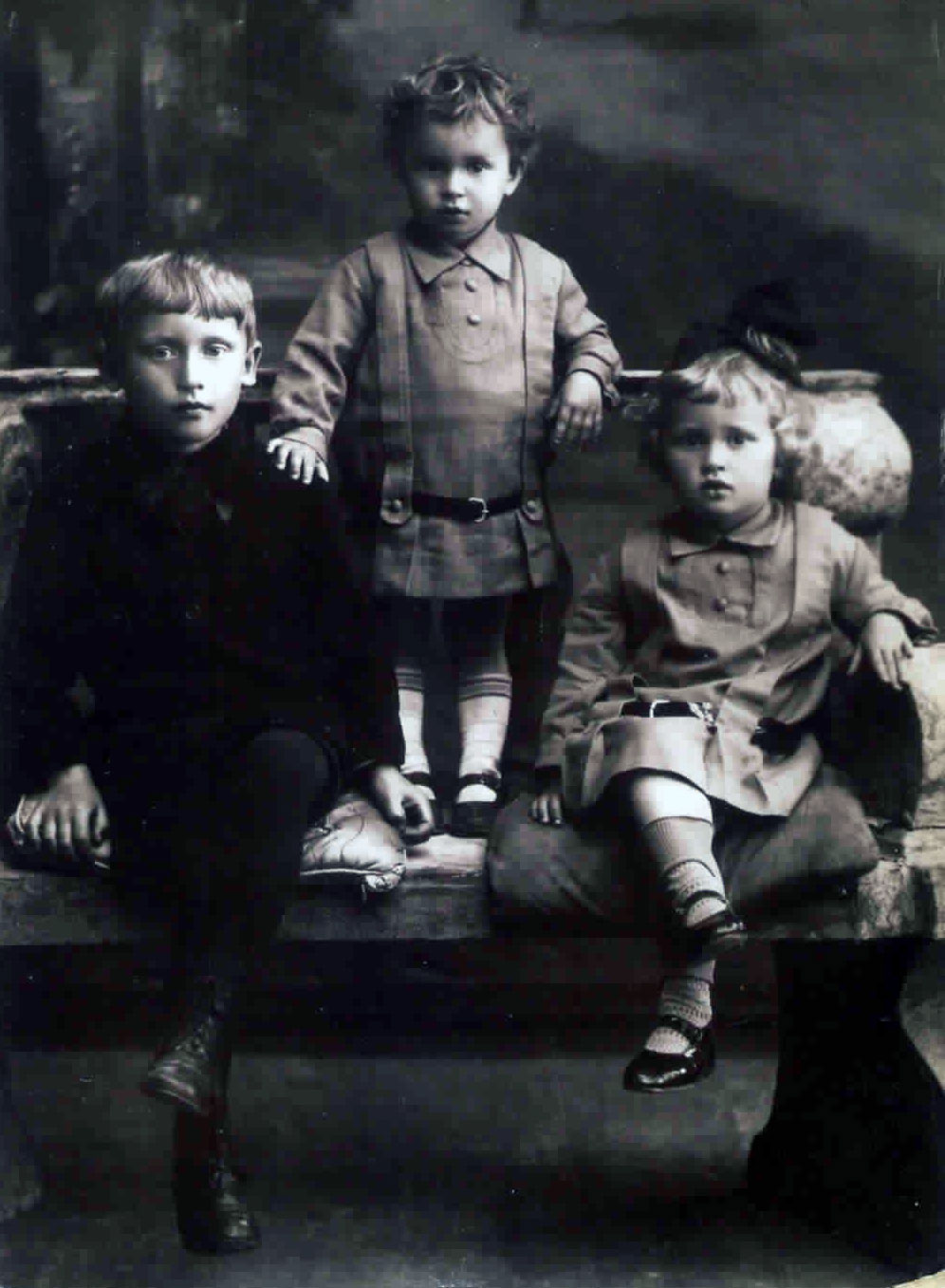
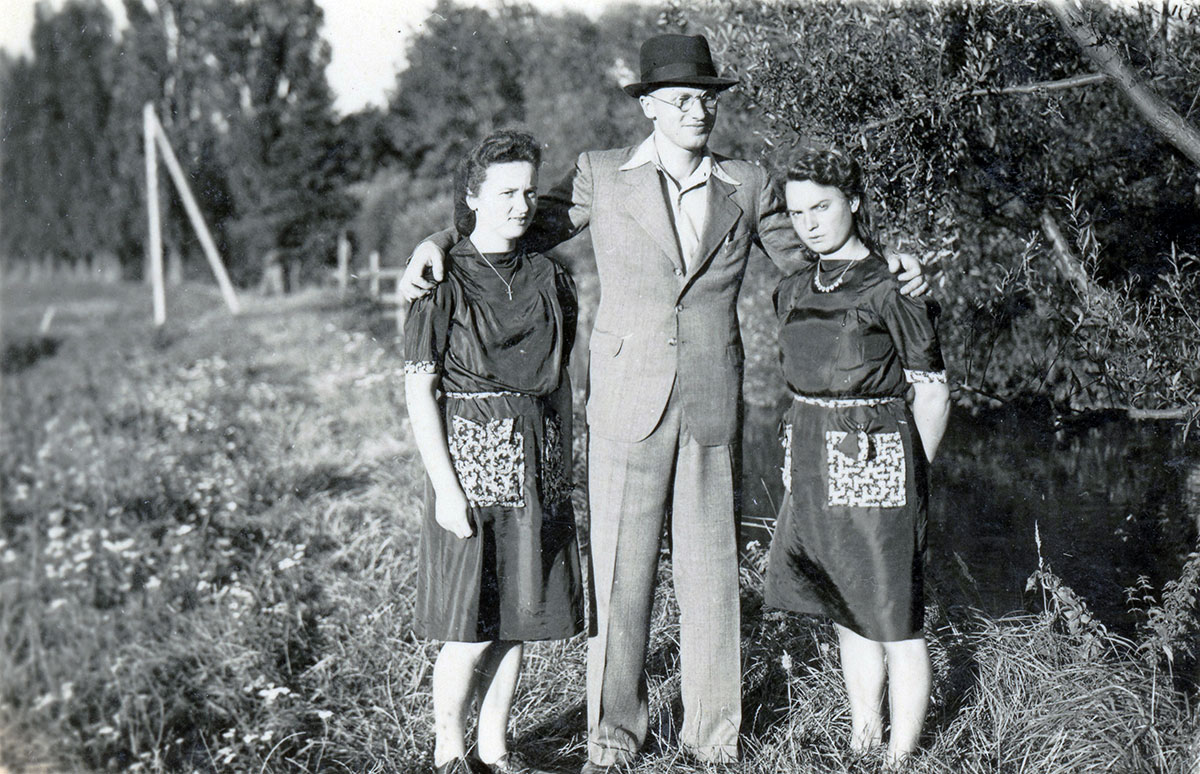
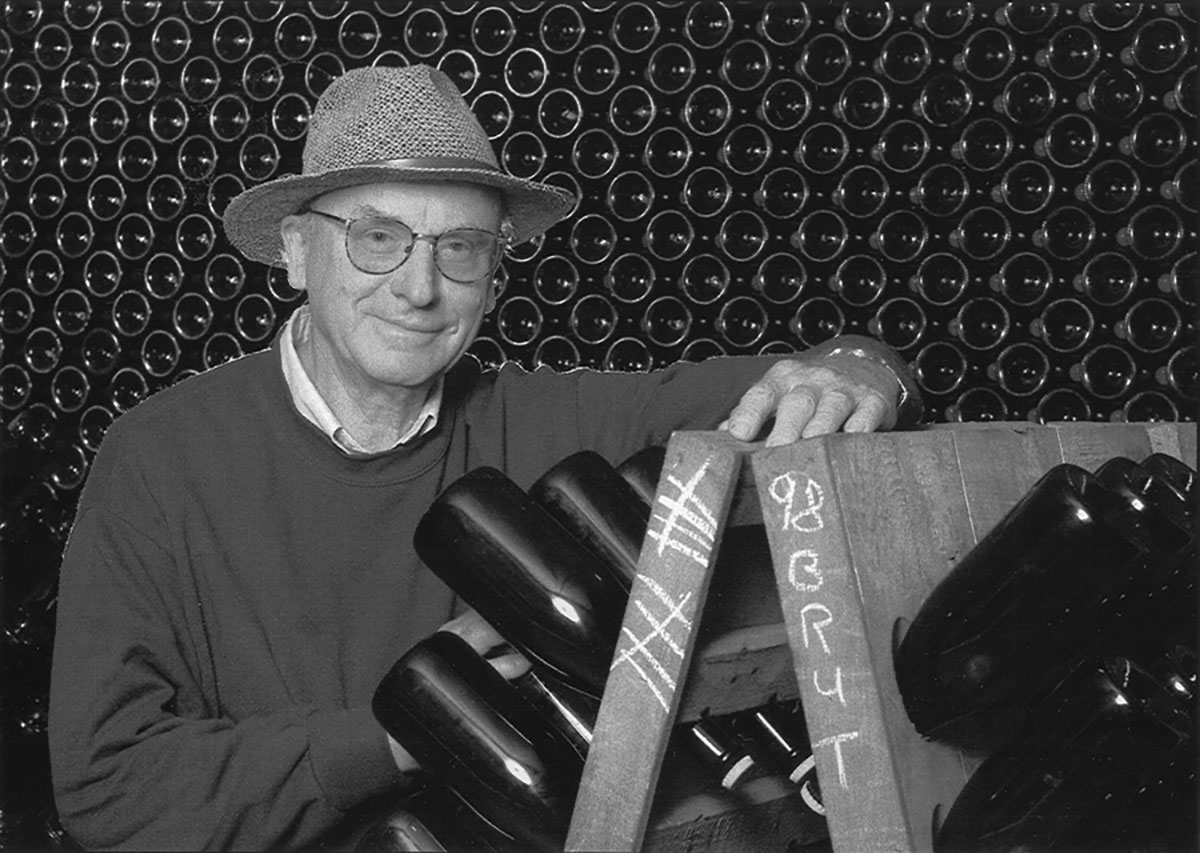
In Bavaria, Willy enrolled in the University of Nuremberg where he would earn his master’s degree in Business. The Frank family would stay in Germany for 8 more years before immigrating to the United States on December 15th, 1951. Willy spoke some English. He would take his sisters to local movies where they would sit all day learning the language. When Konstantin and Eugenia finally moved to Geneva, their three children decided to stay in New York City. Willy had found work selling photographic equipment and was doing well.
Willy would not join the business full-time until 20 years later but would come up frequently from Long Island to work on projects or harvest. His name, however, appeared on the business letterhead from the beginning. Konstantin relied on Willy to handle the tedious aspects of the business – keeping up with the regulatory requirements of permits and record keeping, writing letters, and keeping applications on track.
In 1982, Willy, Margrit, and their children Fred and Barbara, purchased a stone house and wine cellar down the road from Vinifera Wine Cellars. The historical building built in 1886 would eventually be called the Chateau. They stayed in the house on the weekends and moved full-time to the Finger Lakes in 1984.
With the passing of Dr. Konstantin Frank, Willy was now clearly the leader of Vinifera Wine Cellars. He became a tireless representative of the wines of the Vinifera Wine Cellars and a self-appointed spokesperson of eastern Vinifera vines. Willy knew that a rising tide lifts all boats so what was good for all Finger Lakes wines was also good for his. For many people, Willy Frank became the face of New York wine as much as the president of Vinifera Wine Cellars. Willy pioneered the planting of Pinot Noir, Chardonnay, and Pinot Meunier along Chateau and created the first Finger Lakes all-vinifera sparkling wine in 1985 produced Méthode champenoise. To this day, the sparkling wines from Dr. Konstantin Frank Winery are considered one of the best in America. Willy’s daughter, Barbara Frank, would join the winery in 1989 taking over winemaking with a focus on sparkling wines.
In March 2006, while on a sales trip in Florida, Willy passed away at the age of eighty. At the time of his passing, the wines from Vinifera Wine Cellars were being sold in over thirty states, more than any other premium New York State winery, all thanks to the dedication of Willy Frank.
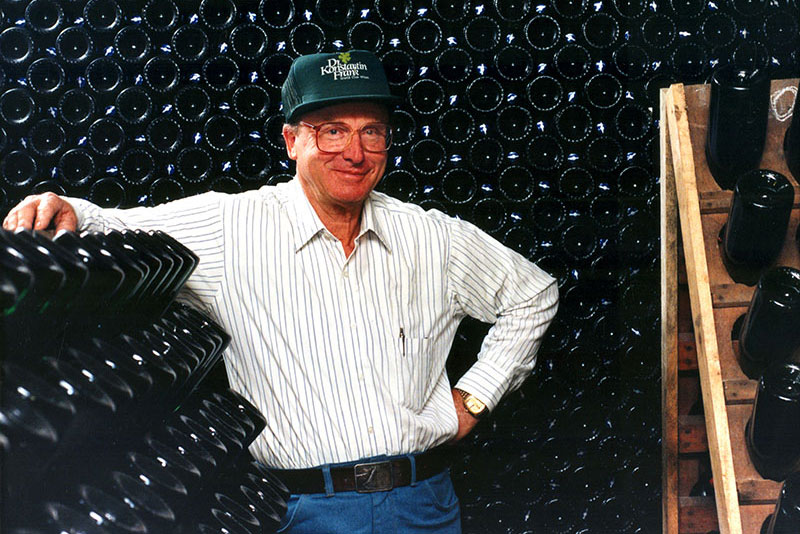
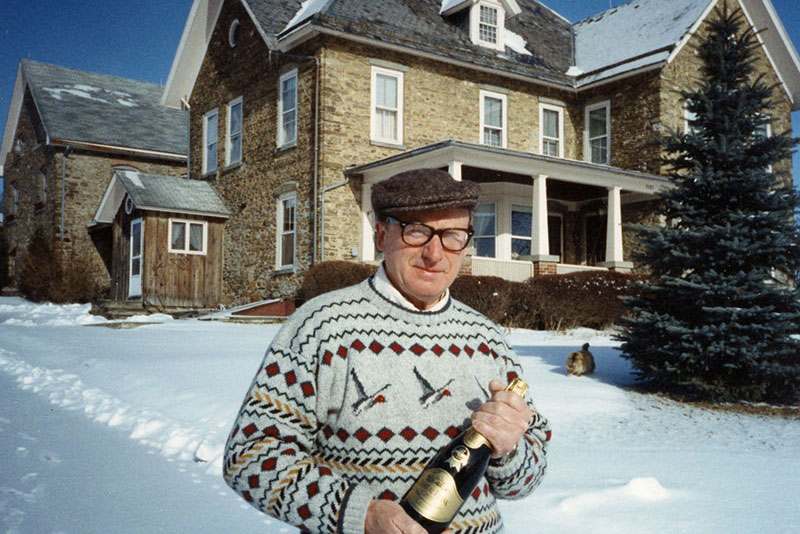

Frederick Frank made a personal commitment to become part of the winery at a very young age. His mother Margrit Frank recalled her son saying to her on one of many weekend trips to the winery, “I belong here,” when he was about eleven years old. When it was time to go to college, there was no enology or viticulture program on the East Coast, so Fred went to Cornell and majored in agricultural business. He took every wine-related course available at the time.
Fred graduated from Cornell in 1979 and Dr. Frank encouraged him to come to the winery and begin to take over from him. His father Willy suggested that the newly graduated Frank go to work for another wine business to gain experience in the world. “Learn to shave on another man’s beard,” Willy would say.
Fred went from Cornell directly to work for Banfi Vintners working in crew drives where salespeople were sent to generate business in under-performing areas. Eventually, he was assigned as a state sales manager in New England and continued to do well. In 1982, Fred began to look beyond sales work to learn more about the production side of wine. He was accepted into the prestigious Geisenheim Institute in Germany. His travels around Europe allowed him to see the vineyards, taste the wines, and gain a perspective on the wine culture and traditions.
After graduating, Banfi offered Fred the Managing Director position of the Old Brookville Vineyard where he established the vineyards on the 127-acre property. In 1993, Fred would finally join the family business as President of Vinifera Wine Cellars.
One of the first things Fred developed in his new role was the Salmon Run label. Fred knew that the winery needed an entry-level, everyday affordable wine that would bring more consumers to enjoy Finger Lakes wines. Fred would work with local growers and the youngest estate wines to produce Salmon Run.
Under Fred’s leadership, the winery’s production and the number of honors received have increased greatly. Wines from Dr. Frank’s winery are now available in over 30 states, making them among the most visible and well-known produced in New York State. The winery draws 70,000 visitors each year, providing a considerable boost to the local economy.
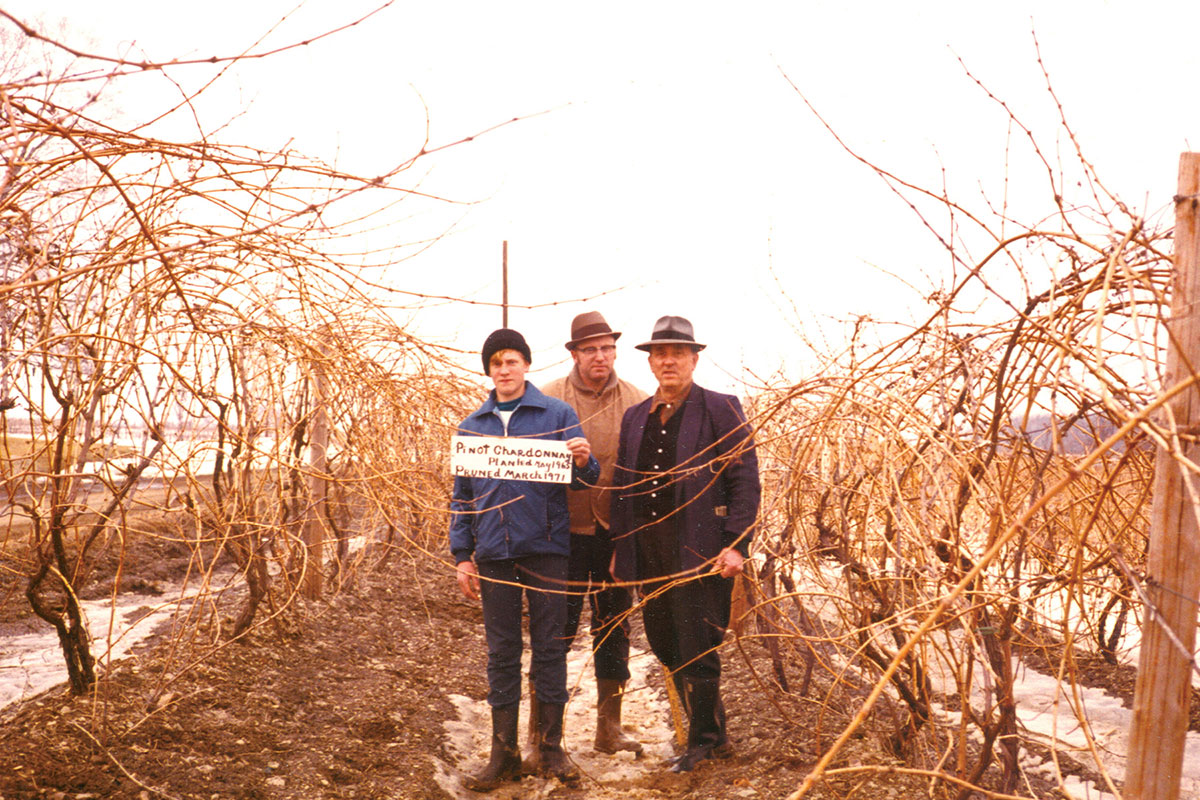
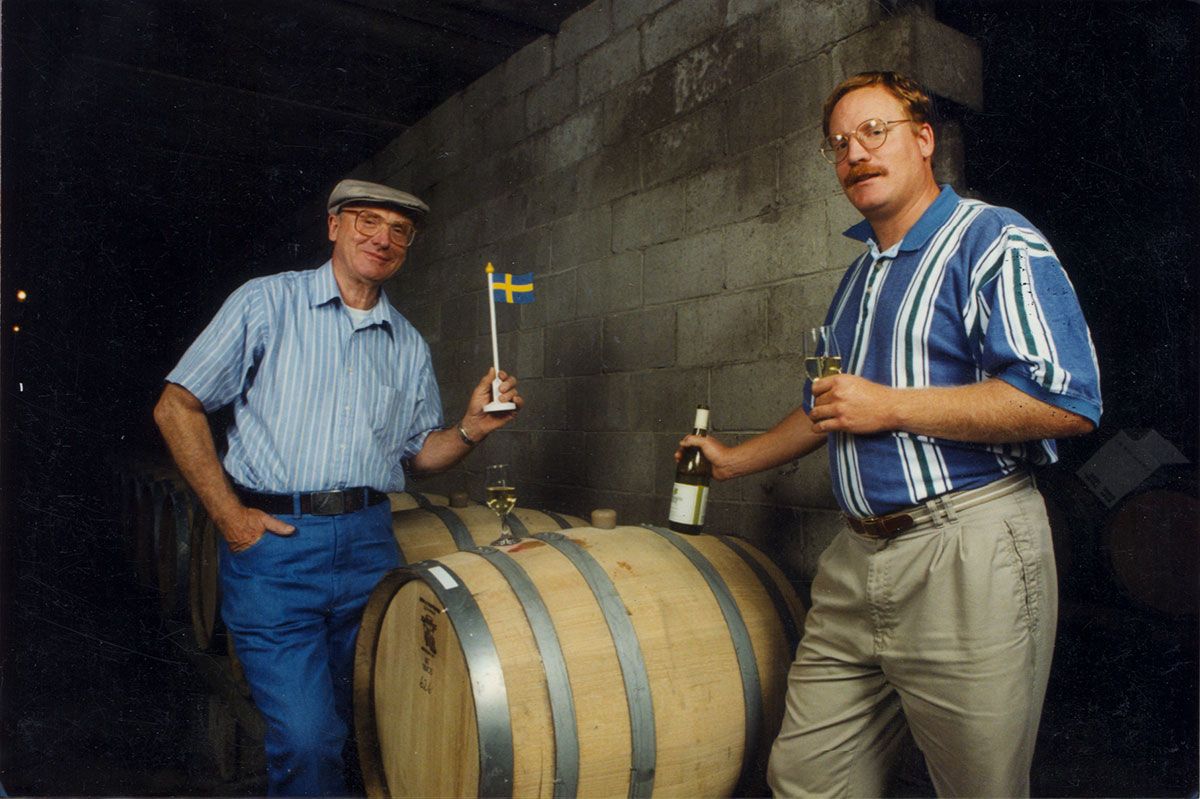
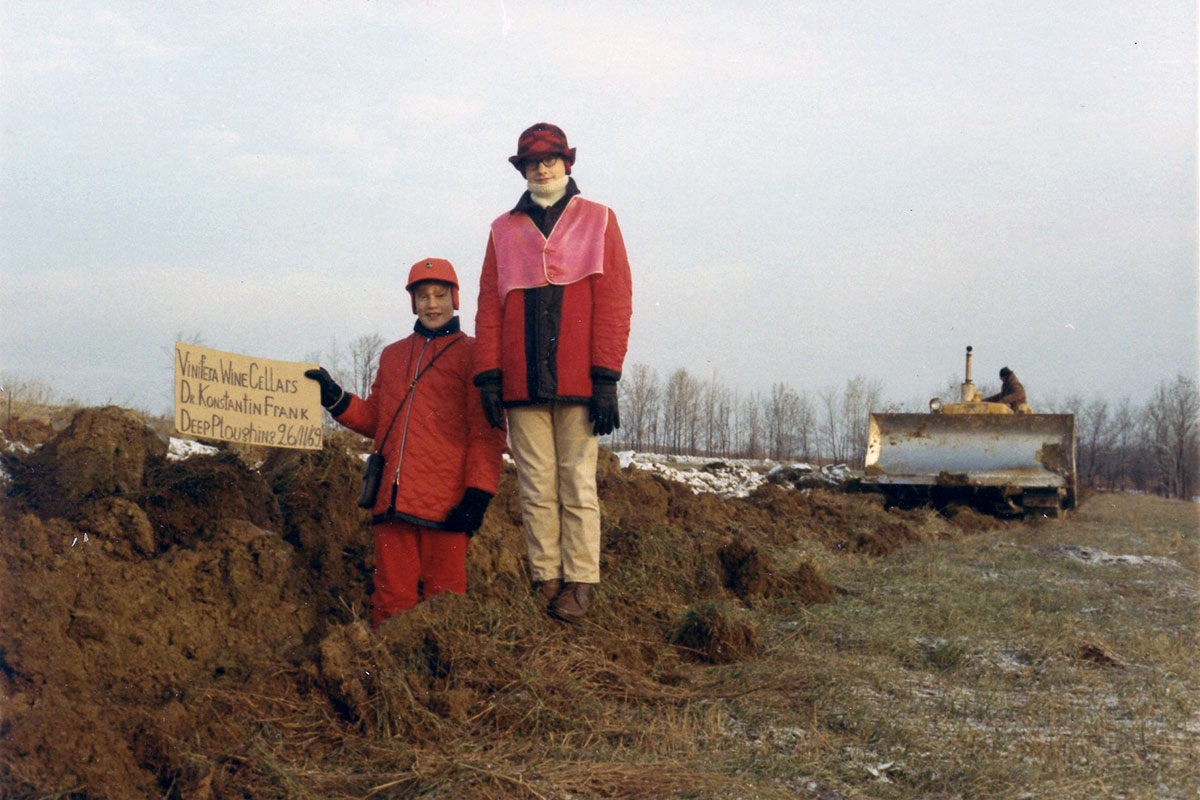
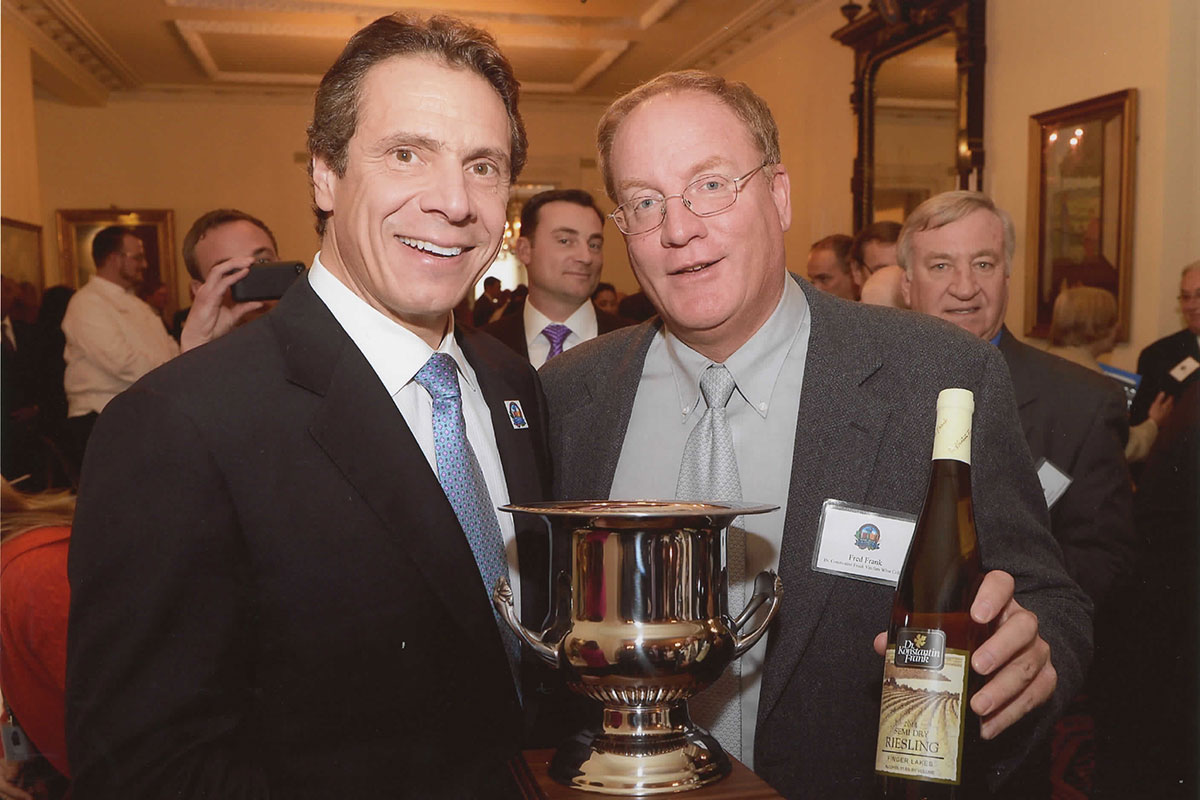

Frederick and Maryclaire Frank had three children, Meaghan, Gretchen, and Kyle. Fred had hoped one day that one or all of his children would join the family business.
A sudden call in 1993 that Willy, Meaghan’s grandfather, was very sick, the family packed up and moved to the Finger Lakes. Willy recovered, and Fred and Willy would work together for the next 13 years. The three children grew up in Corning and spent a lot of time at the winery.
After Meaghan graduated from high school, she enrolled at Cornell University for a degree in communications. Meaghan’s interest in wine and the family business grew.
Meaghan received her MBA in wine business from the University of Adelaide in Australia and when she returned to the Finger Lakes she thought she wouldn’t be taken seriously with an enology degree. In 2015, Meaghan completed her second Master’s degree in enology from Cornell University and joined the winery full-time.
With combined expertise in the wine business and winemaking, Meaghan has revolutionized the way the winery is run as well as the quality of the wines. The day-to-day running of the winery is now in the hands of Meaghan.
Since 2015, Meaghan has made some notable enhancements to Dr. Frank. The Chateau Frank stone house, built in 1886, underwent major renovations and is now the site of the winery’s new wine and food events. It’s also fitting as the first woman of the family running Dr. Frank, she started a new wine series called the Helm series, honoring four women from the family who made important contributions. Meaghan is very invested in creating a good corporate culture with regular social get-togethers, birthday celebrations, and a company garden.
Looking into the future, Meaghan wants to reexamine some of the many grape varieties that Dr. Frank originally planted. With climate change, varieties once deemed unviable might well be feasible today. Advancements in technology, winemaking, and viticulture are in the works. At the young age of 30, we have a lot to look forward to.
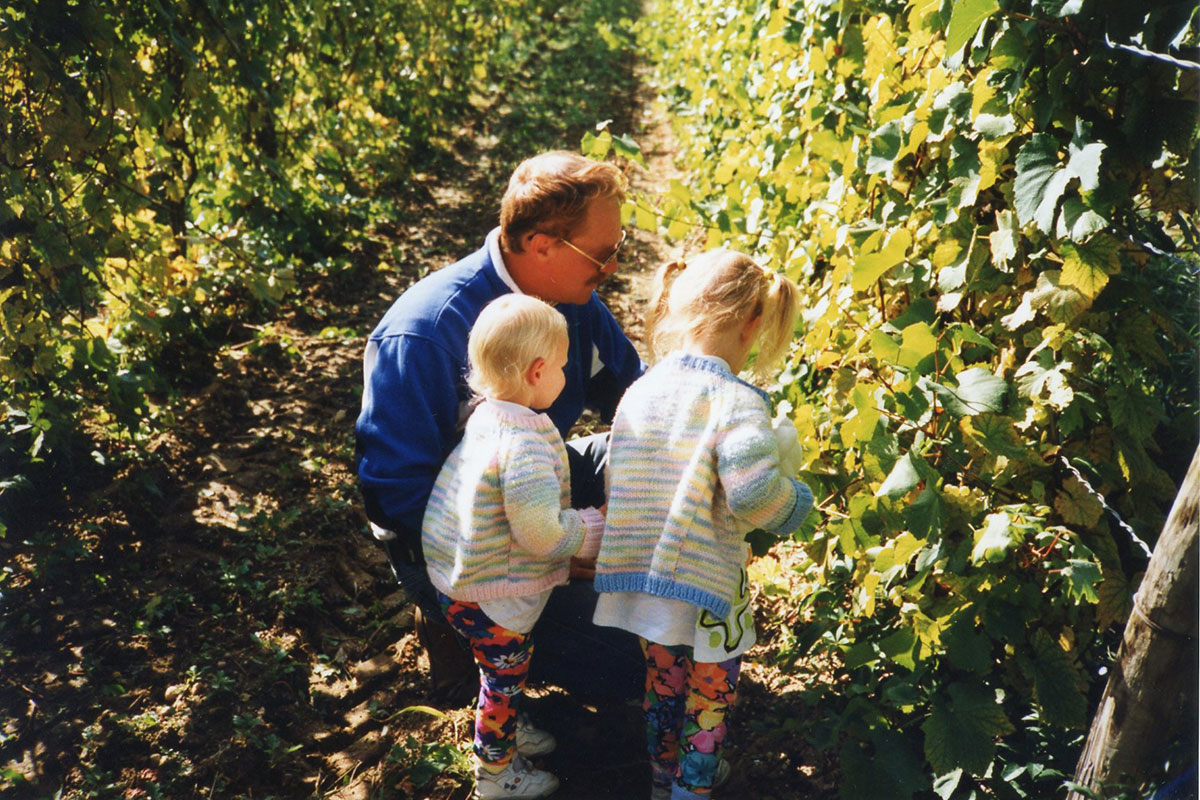
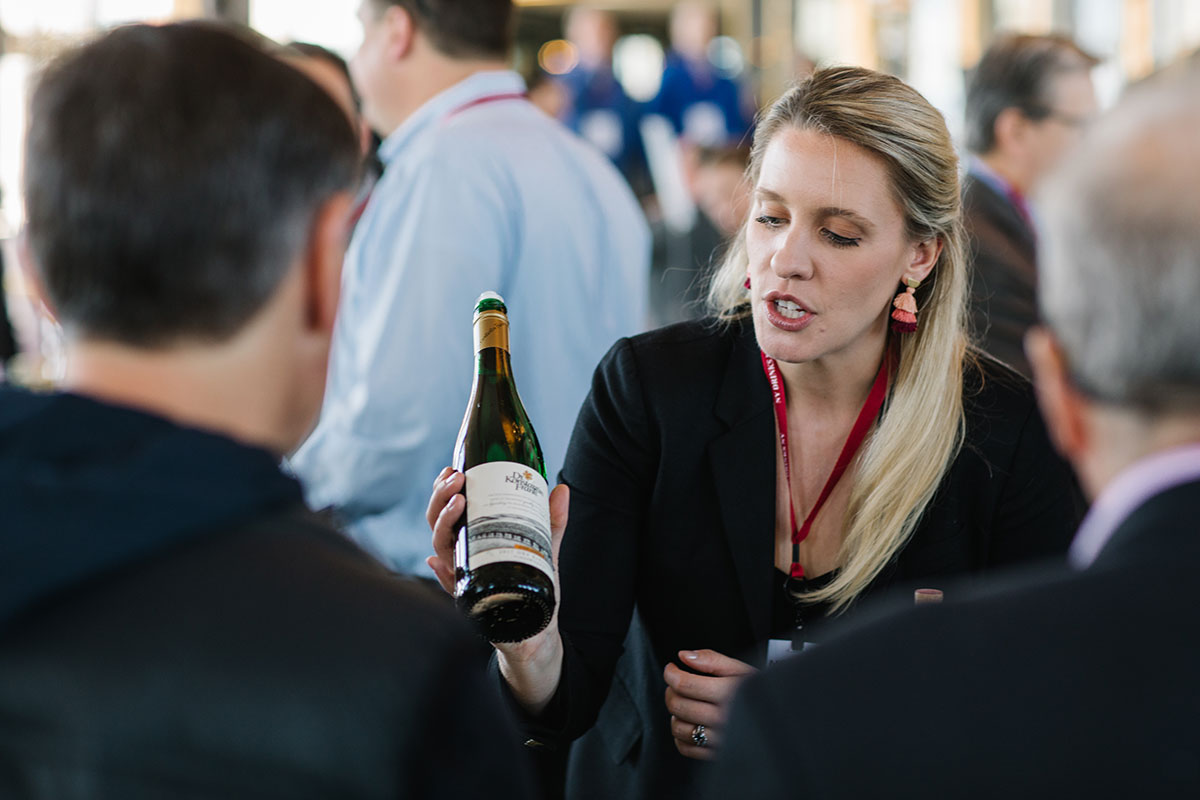
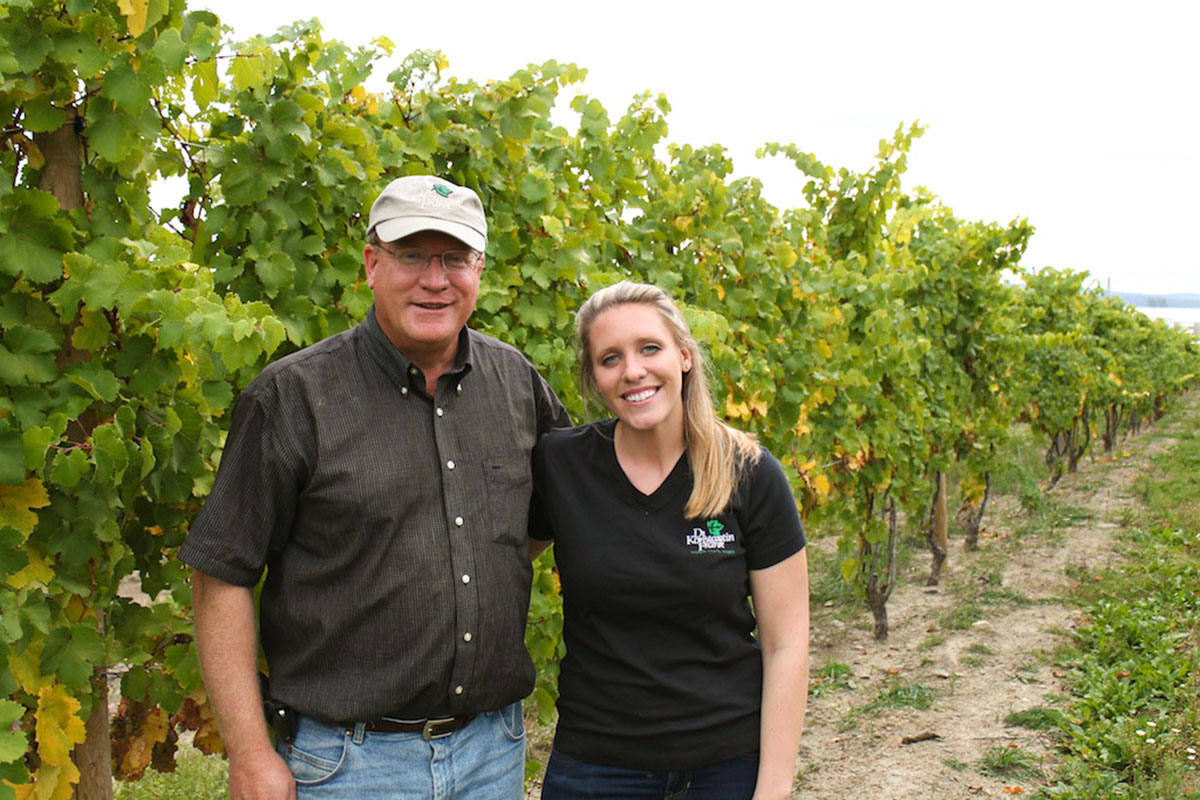
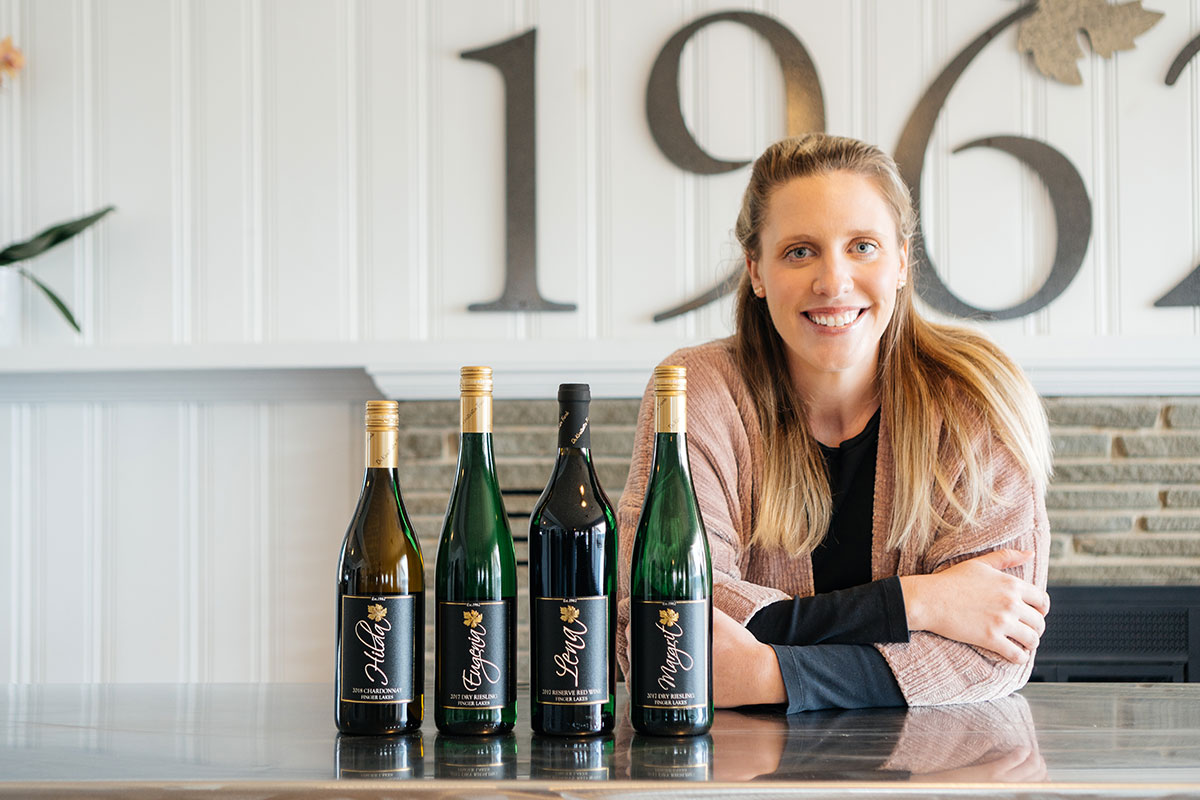

Email list members receive first access to new releases, winery news, and exclusive offers.
Join our email list and stay connected with updates on new releases, special offers, and events.